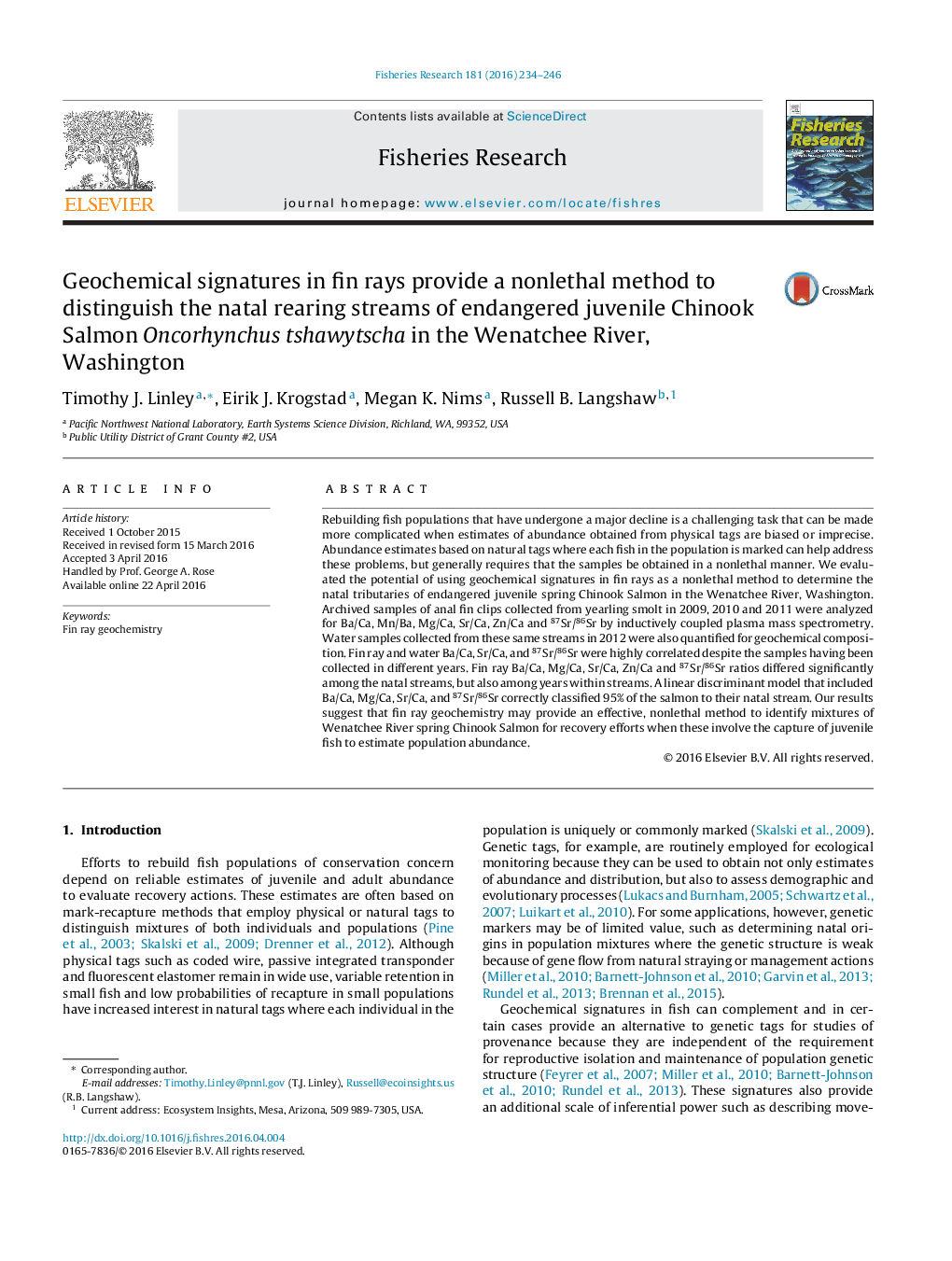| کد مقاله | کد نشریه | سال انتشار | مقاله انگلیسی | نسخه تمام متن |
|---|---|---|---|---|
| 4542705 | 1626788 | 2016 | 13 صفحه PDF | دانلود رایگان |

• Juvenile spring Chinook Salmon from three streams were analyzed for fin ray chemical composition.
• Element/calcium and isotopic ratios in fin rays were correlated with those in the water.
• Geochemical signatures in fin rays can distinguish juvenile Chinook Salmon from different streams with high accuracy.
Rebuilding fish populations that have undergone a major decline is a challenging task that can be made more complicated when estimates of abundance obtained from physical tags are biased or imprecise. Abundance estimates based on natural tags where each fish in the population is marked can help address these problems, but generally requires that the samples be obtained in a nonlethal manner. We evaluated the potential of using geochemical signatures in fin rays as a nonlethal method to determine the natal tributaries of endangered juvenile spring Chinook Salmon in the Wenatchee River, Washington. Archived samples of anal fin clips collected from yearling smolt in 2009, 2010 and 2011 were analyzed for Ba/Ca, Mn/Ba, Mg/Ca, Sr/Ca, Zn/Ca and 87Sr/86Sr by inductively coupled plasma mass spectrometry. Water samples collected from these same streams in 2012 were also quantified for geochemical composition. Fin ray and water Ba/Ca, Sr/Ca, and 87Sr/86Sr were highly correlated despite the samples having been collected in different years. Fin ray Ba/Ca, Mg/Ca, Sr/Ca, Zn/Ca and 87Sr/86Sr ratios differed significantly among the natal streams, but also among years within streams. A linear discriminant model that included Ba/Ca, Mg/Ca, Sr/Ca, and 87Sr/86Sr correctly classified 95% of the salmon to their natal stream. Our results suggest that fin ray geochemistry may provide an effective, nonlethal method to identify mixtures of Wenatchee River spring Chinook Salmon for recovery efforts when these involve the capture of juvenile fish to estimate population abundance.
Journal: Fisheries Research - Volume 181, September 2016, Pages 234–246